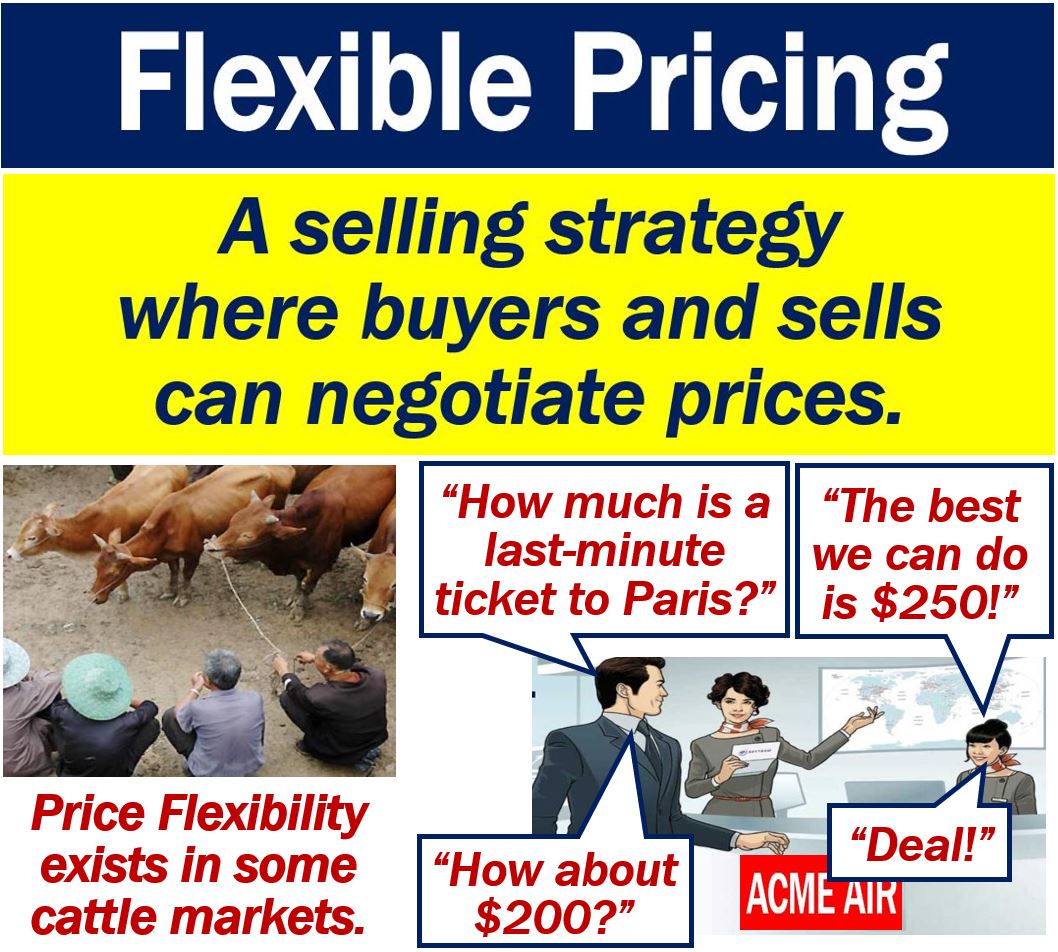Flexible Pricing is a business strategy in which a product’s final price is open for negotiation. In other words, customers and sellers can get together and try to alter the price, i.e., either knock it down or push it up. Flexible pricing does not only apply to the price of goods but services too. It is, in fact, a very common strategy in tailor-made services.
The term may also refer to adapting one’s prices more closely to market forces. Market forces are the forces of supply and demand. When demand rises or supply declines, prices go up. Conversely, when demand declines or supply increases, prices fall.
Flexible pricing encourages a dynamic market where prices reflect both the seller’s circumstances and the buyer’s perceived value.
Flexible pricing – example
A carpenter, for example, charges the customer according to the amount of customization the customer requested. The carpenter also takes into account how much he believes the customer can afford.
Customers subsequently negotiate the price according to their understanding of the market.
Flexible pricing contrasts with fixed pricing. Fixed pricing is common among large corporations and retailers. If I go to a major supermarket chain, I cannot negotiate the price of goods for sale.
Perhaps, if I find a defective product, I might get a discount at a supermarket.

Regarding the meaning of flexible pricing, mbaskool.com writes:
“It is a pricing strategy in which the final price at which the product or service being sold is open for negotiation between buyers and sellers.”
“This strategy is common in services which are customized as per customer’s requests.”
Customers like flexible pricing
Most customers like flexible pricing. When we can influence prices, we can more easily find what we are looking for at an affordable price.
Rather than facing a binary choice, i.e., buy or don’t buy, there is another option. The other option is to try to get a better price.
Flexible pricing – sellers
Sellers like flexible pricing if the strategy leads to greater sales. There are some businesses which benefit enormously from this strategy.
Pricing flexibility can be especially beneficial for sellers of perishable goods. Perishable goods are products that cannot be on sale for long because they either decay, become unsafe, or disappear.
-
Last-minute flights
Vacant airline seats for a flight that takes off in two hours, for example, are perishable goods. After the flight takes off, you cannot sell them.
If airline employees can negotiate with consumers directly, the company is more likely to sell those vacant seats. In other words, a flexible pricing strategy helps sell last-minute tickets.
Regarding the benefits of being flexible on prices, Living Economics says:
“Flexible pricing makes the potential of a more efficient marketplace suddenly realizable.”
“When prices can vary constantly with changes in supply and demand at little cost, buyers can more easily find the price at which they are willing and able to buy.”
In the digital marketplace, flexible pricing algorithms can adjust prices in real-time, taking into account competitor pricing, inventory levels, and consumer behavior patterns.
Video – What is Flexible Pricing?
This video, from Marketing Business Network, our sister channel on YouTube, explains what ‘Flexible Pricing’ is using easy-to-understand language and examples.
